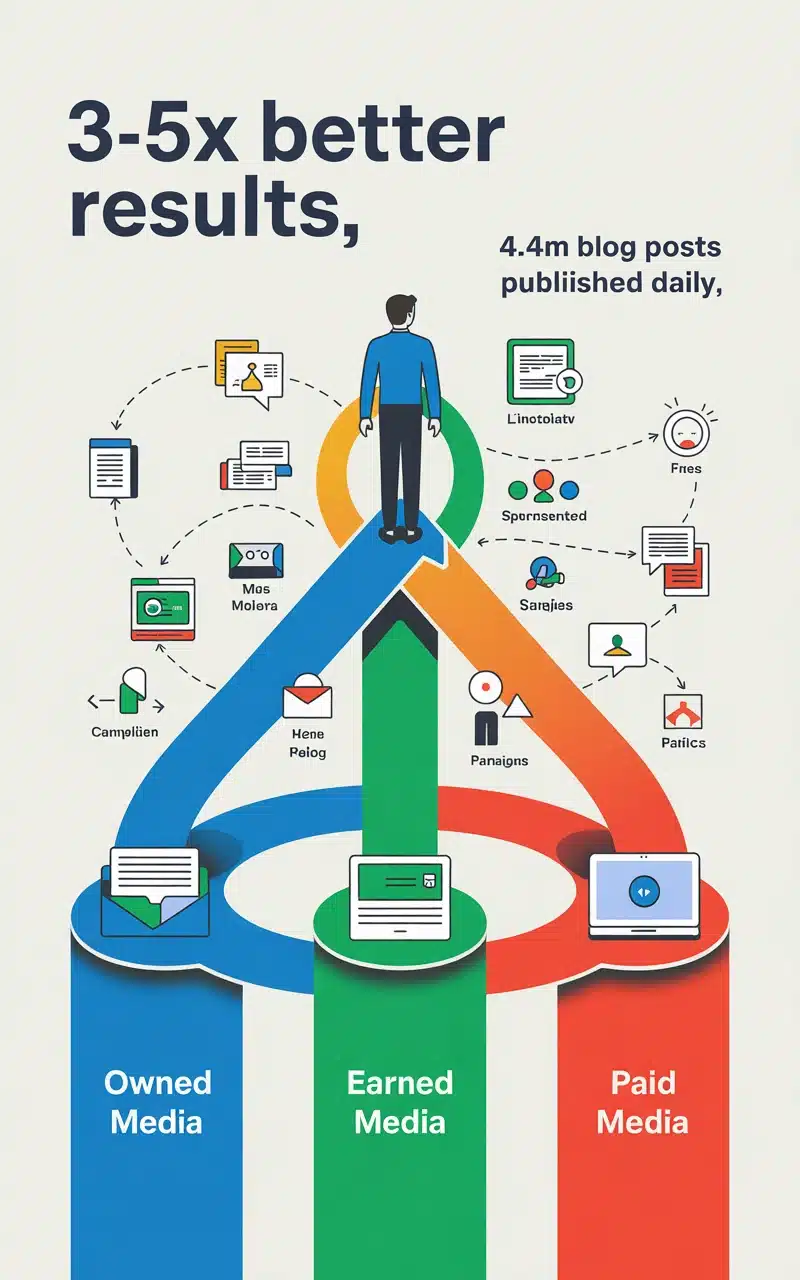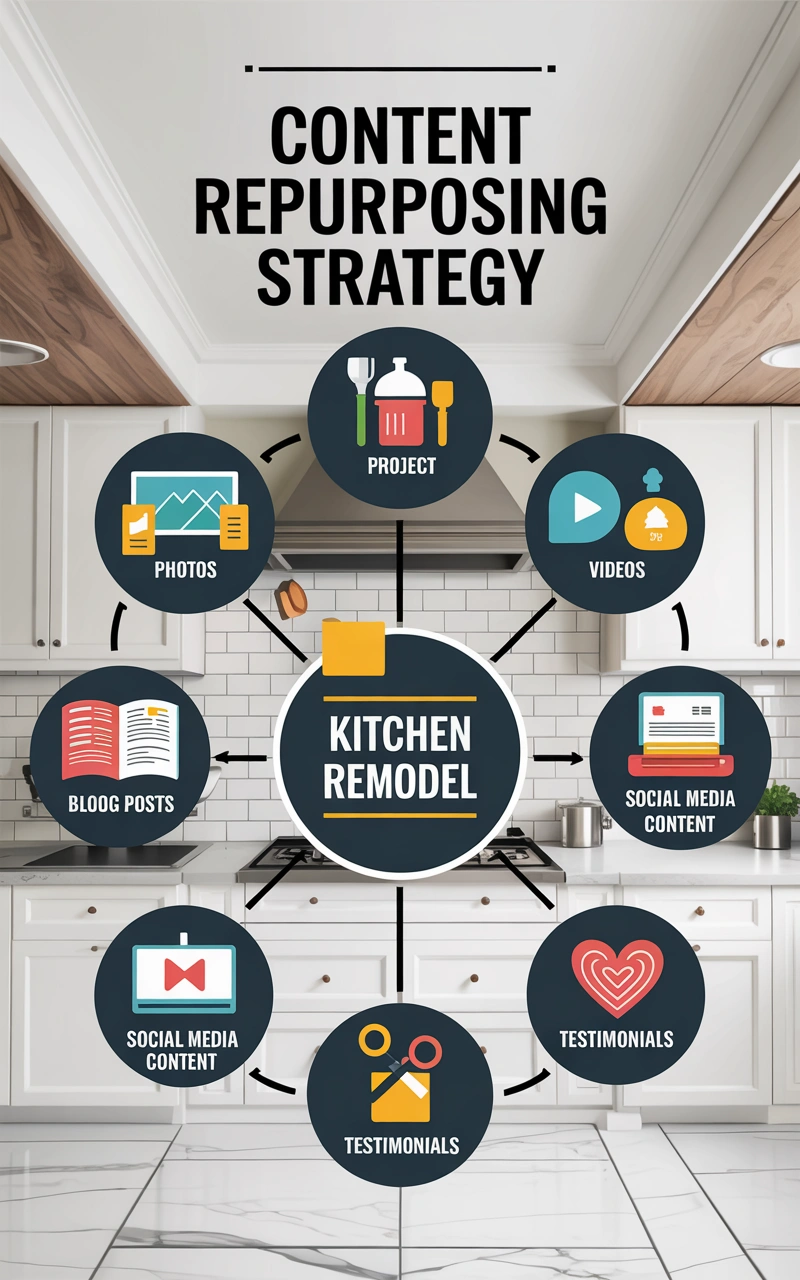
Calculate Your Content’s Profit Potential: The Data-Driven Approach to Distribution Investment
Have you ever poured money into content creation only to wonder if it was worth it months later? You’re not alone. Many businesses invest in content without a clear picture of what returns to expect or when to expect them.
What if you could predict your returns before spending a dollar? This article gives you a practical framework to calculate your content distribution return on investment (ROI) before making significant investments.
Why Calculate Content Distribution ROI Upfront?
Calculating ROI before investing in content offers three critical advantages:
- Data-driven budget allocation – Know exactly how much to spend based on projected returns
- Realistic timeline expectations – Understand when your investment will start paying off
- Clear performance benchmarks – Set specific targets to measure success
Without these calculations, businesses often fall into the trap of creating content for months with no clear idea of what success looks like or when to expect it.
Essential Metrics for Your ROI Calculator
To build an effective ROI calculator for your content efforts, you need to track these key metrics:
Traffic Potential
- Monthly search volume for target topics
- Estimated click-through rate from Google
- Projected traffic growth over time
Conversion Metrics
- Visitor-to-lead conversion rate
- Lead-to-customer conversion rate
- Average order value
Cost Factors
- Content creation costs (writing, editing, design)
- Distribution costs (paid promotion, tools)
- Ongoing maintenance costs
Time Variables
- Time to rank in Google (3-12 months for most topics)
- Content lifespan (how long it will generate returns)
The Step-by-Step ROI Calculator Framework
Follow this process to build your content distribution ROI calculator:
1. Research Phase: Gather Your Data
Start by collecting accurate baseline data:
Traffic Research:
- Research monthly search volumes for your target topics
- Analyze current rankings and traffic of top-performing competitors
- Calculate realistic click-through rates based on position
Conversion Research:
- Review your current website conversion rates
- Study industry benchmarks if you lack data
- Factor in content quality and relevance to the topic
Example: Topic: “Small business tax preparation”
- Monthly searches: 5,800
- Estimated position: 4-6 (after 6 months of effort)
- Expected click-through rate: 4.5%
- Projected monthly traffic: 261 visitors
2. Calculate Your Content Investment
Add up all costs associated with creating and distributing your content:
| Cost Category | Calculation Method | Example |
|---|---|---|
| Content Creation | (Hours × Hourly Rate) + Outsourcing Costs | $1,200 |
| Visual Assets | Design costs + Stock photo purchases | $350 |
| Distribution | Paid promotion + Tool costs | $450 |
| Maintenance | Quarterly updates × Hourly Rate | $600/year |
| Total Investment | $2,600 |
3. Project Your Return Timeline
Most content doesn’t generate immediate returns. Map out when you expect to see results:
- Months 1-3: Initial indexing, minimal traffic
- Months 4-6: Growing visibility, starting to rank
- Months 7-12: Ranking improvements, increasing traffic
- Months 13+: Stable traffic with periodic updates needed
Create a monthly breakdown of expected traffic based on this timeline.
4. Estimate Conversions and Revenue
Now calculate how your traffic will convert to actual revenue:
- Monthly traffic × Visitor-to-lead conversion rate = Monthly leads
- Monthly leads × Lead-to-customer conversion rate = Monthly customers
- Monthly customers × Average order value = Monthly revenue
Example Calculation:
- Month 9 projected traffic: 261 visitors
- Visitor-to-lead conversion: 3.5% = 9.1 leads
- Lead-to-customer conversion: 10% = 0.91 customers
- Average order value: $1,500
- Month 9 revenue: $1,365
5. Calculate Your ROI
The final step is calculating your actual ROI:
ROI = (Total projected revenue - Total investment) ÷ Total investment × 100%For a 24-month content lifespan:
- Total projected revenue: $47,250
- Total investment: $2,600
- ROI = (47,250 – 2,600) ÷ 2,600 × 100% = 1,717%
An Example ROI Calculation in Action
Let’s see how this works for a small accounting firm targeting small business owners:
Content Investment:
- Comprehensive guide on tax preparation ($2,600 total investment)
Traffic Projections:
- Months 1-3: 20 visitors/month
- Months 4-6: 100 visitors/month
- Months 7-12: 260 visitors/month
- Months 13-24: 300 visitors/month
Conversion Rates:
- Visitor-to-lead: 3.5%
- Lead-to-customer: 10%
- Average customer value: $1,500
ROI Timeline:
- Break-even point: Month 11
- 12-month ROI: 120%
- 24-month ROI: 1,717%
This calculation shows that while the content requires nearly a year to break even, its long-term value makes it a worthwhile investment.
Adjusting Expectations by Industry and Business Type
Different industries see varying returns from content investments:
B2B vs. B2C Differences
B2B Content ROI:
- Typically longer sales cycles (3-12 months)
- Higher average order values
- Lower traffic volumes but higher conversion value
- Break-even often takes 12+ months
B2C Content ROI:
- Shorter sales cycles (immediate to 30 days)
- Lower average order values
- Higher traffic potential
- Breakeven is possible within 6-9 months
Competitive Niche Factors
When calculating ROI in highly competitive niches:
- Double your estimated time to rank
- Increase your quality investment by 30-50%
- Focus on more specific long-tail topics initially
- Factor in stronger distribution efforts
Seasonal Considerations
For businesses with seasonal demand:
- Time content to rank 3-4 months before peak season
- Calculate ROI based on seasonal traffic fluctuations
- Consider the long-term value across multiple seasons
Red Flags in Your ROI Calculations
Watch for these warning signs that your ROI projections might be unrealistic:
- Traffic estimates exceed search volume
- Your projected traffic can’t be higher than the total monthly searches
- Conversion rates above industry benchmarks
- Most websites convert 1-5% of visitors to leads
- Ranking estimates are too aggressive
- New content rarely ranks in top positions within 3 months
- Missing cost factors
- Forgetting technical implementation, promotion, or updating costs
- Ignoring competition quality
- Higher competition requires more investment and time
Implementing Your ROI Calculator
To put this framework into practice:
- Create a spreadsheet with monthly projections for the next 24 months
- Document all assumptions clearly so you can adjust them later
- Track actual performance against projections monthly
- Refine your calculator as you gather real data
Remember that your first few calculations will be estimates. The real value comes from refining your model as you collect actual performance data.
Making Smart Content Investments
A well-built ROI calculator transforms content from a hope-based activity to a predictable business investment. By understanding the potential returns before investing, you can:
- Allocate budgets with confidence
- Set realistic timelines with stakeholders
- Identify high-value content opportunities
- Avoid low-return content investments
The most successful content marketers aren’t those who create the most content—they’re those who predict and measure their returns most accurately.
Next Steps
Ready to calculate your content ROI? Start by gathering your baseline metrics and creating a simple spreadsheet model. Even a rough calculator will provide more guidance than no calculator at all.
Remember that content marketing is both an art and a science. Your ROI calculator provides the science to balance your creative efforts, ensuring that your content isn’t just good—it’s profitable.
What content investment are you considering right now? Run it through this ROI framework and see if the numbers support your gut feeling. You might be surprised by what you discover.
Grow Your Business – Get More Customers – Learn How it Works!







